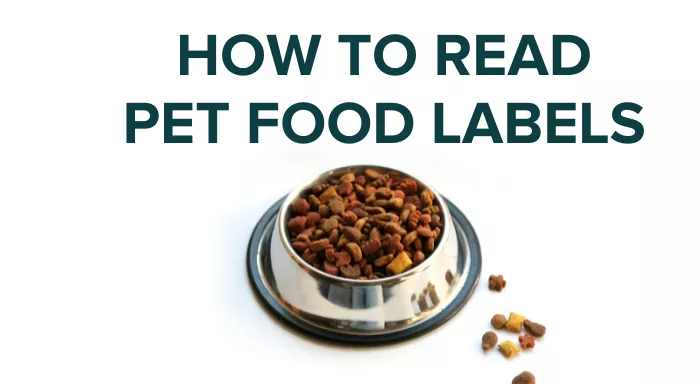Feeding your dog properly is one of the most important aspects of pet care. A well-planned feeding schedule helps maintain your dog’s health, energy levels, and overall well-being. Many dog owners wonder: When should I feed my dog? How much food is enough? The answers depend on various factors, including age, breed, size, activity level, and health conditions.
In this article, we will explore the best feeding schedules for different types of dogs, discuss how to determine the right portion sizes, and provide practical tips for maintaining a healthy diet for your pet.
Understanding a Dog’s Nutritional Needs
Before setting up a feeding schedule, it’s essential to understand what nutrients your dog needs to stay healthy. A dog’s diet should be balanced and include:
Proteins – Essential for muscle growth and maintenance.
Fats – Provide energy and help maintain a healthy coat and skin.
Carbohydrates – Supply additional energy and aid digestion.
Vitamins and minerals – Support immune function, bone health, and overall well-being.
Water – Vital for digestion, circulation, and temperature regulation.
The exact nutritional balance varies based on your dog’s breed, size, and activity level.
How Many Times a Day Should You Feed Your Dog?
Puppies (8 weeks – 6 months)
Puppies grow quickly and need frequent meals to support their development. Their small stomachs cannot hold large amounts of food at once. The ideal feeding schedule is:
- 8-12 weeks old: 4 meals per day
- 3-6 months old: 3 meals per day
- 6-12 months old: 2 meals per day
Large-breed puppies may continue eating three meals per day until they are fully grown, while small-breed puppies can transition to two meals per day by six months of age.
Adult Dogs (1 year and older)
Most adult dogs do well with two meals per day—one in the morning and one in the evening. However, some dogs, particularly small breeds with fast metabolisms, may benefit from three meals per day.
Senior Dogs (7+ years)
As dogs age, their metabolism slows down, and their activity levels decrease. Some senior dogs prefer smaller, more frequent meals to aid digestion and prevent bloating. Two meals per day is usually sufficient, but some seniors may do better with three smaller meals.
Determining How Much to Feed Your Dog
The right portion size depends on your dog’s age, size, activity level, and metabolism. Most dog food brands provide feeding guidelines on the packaging, but these are general recommendations.
Adjusting Portions Based on Activity Level
- Highly active dogs (such as Border Collies or Labrador Retrievers) need 20-30% more food than average dogs.
- Less active dogs (such as Bulldogs or Basset Hounds) require 10-20% less food than the recommended guidelines.
- Overweight dogs should eat 10-20% less and switch to a low-calorie diet if necessary.
Wet vs. Dry Food: Portion Differences
- Dry kibble is more calorie-dense, so smaller portions are needed.
- Wet food contains more moisture and fewer calories per serving, so portion sizes should be larger.
- Many dog owners mix dry and wet food to provide a balance of nutrients and taste.
Best Feeding Schedule for Different Breeds
Small Breeds (Chihuahua, Pomeranian, Yorkshire Terrier)
- Small dogs have high metabolisms and need smaller, more frequent meals.
- Feed them three times per day to maintain their energy levels.
- Be careful not to overfeed—small breeds are prone to obesity.
Medium Breeds (Beagle, Cocker Spaniel, Border Collie)
- Two meals per day works well for most medium-sized dogs.
- Active breeds like Border Collies may need slightly larger portions.
Large Breeds (Golden Retriever, German Shepherd, Labrador Retriever)
- Large dogs are prone to bloat, a life-threatening condition caused by eating too quickly.
- It’s best to feed them twice a day instead of one large meal.
- Consider using slow-feeder bowls to prevent gulping.
Giant Breeds (Great Dane, Mastiff, Saint Bernard)
- Giant breeds require large amounts of food but should not eat too much at once.
- Split their meals into two or three feedings per day to reduce the risk of bloat.
- High-protein diets help maintain their muscle mass.
Common Feeding Mistakes to Avoid
Overfeeding
Many dog owners mistakenly overfeed, leading to obesity. Overweight dogs are at risk of joint problems, heart disease, and diabetes. Stick to portion guidelines and adjust as needed.
Feeding Human Food
Certain human foods, like chocolate, grapes, onions, and fatty meats, are toxic to dogs. Avoid feeding table scraps, as they can lead to digestive upset and unhealthy weight gain.
Irregular Feeding Schedules
Dogs thrive on routine. Feeding them at different times every day can cause digestive issues and anxiety. Set a fixed schedule to maintain their health.
Not Providing Enough Water
Dogs need constant access to fresh water. Dehydration can lead to serious health problems, especially in hot weather.
Special Diets for Dogs with Health Issues
Dogs with Sensitive Stomachs
- Smaller, more frequent meals help prevent digestive issues.
- Limited-ingredient diets may reduce food sensitivities.
Dogs with Allergies
- Hypoallergenic diets with novel proteins like duck or venison can help.
- Avoid common allergens like chicken, beef, or grains.
Senior Dogs
- Older dogs need lower-calorie diets to prevent weight gain.
- Joint supplements (glucosamine and chondroitin) may benefit aging dogs.
Conclusion
Feeding your dog the right amount of food at the right time is crucial for their health, energy, and longevity. Puppies need frequent meals, adults do well with two meals per day, and senior dogs may benefit from smaller, more frequent meals.
Understanding your dog’s breed, activity level, and specific health needs will help you create the perfect feeding schedule. Consistency, portion control, and quality nutrition are key to keeping your furry friend healthy and happy.
By following these guidelines, you can ensure your dog enjoys a long, active, and fulfilling life with you!
Related topics:
What Ingredients Should You Look for in Dog Food?
Best Puppy Foods for Healthy Growth


